




The German Confed. had none flag. Only in 1848 (the year of the revolution) and some time after – to 1852 – was used a national flag and a war flag in the colours black, red and gold. The basis for this was the "Federal Act on Arms and Colours of the German Confederation" (← please read here, but only in German language)
About nascence and origin of the black-red-golden flag ← please read here
After the failure of the revolution, the black-red-golden flag is removed on 11th of May in 1852 from the ships of the federal fleet, and on 18th of May from the seat of the National Assembly. The federal fleet becomes auctioned. The Prussian ambassador Otto von Bismarck can prevent the also planned auctioning of the war flags of the federal fleet. He lets bring the flags into the federal fortress of Mainz, where they were kept save. Apparently have at least survived two of the war flags of the imperial fleet from 1848. One is registered in the German Historical Museum under the inventory number Fa 77/64 out, the other is in the Army Museum in Dresden.
Source: Jürgen Kaltschmitt,
mhoefert.blogspot.com

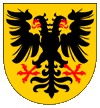
Coat of arms of the German Confederation
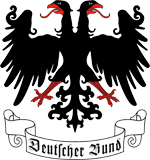
Coat of arms of the German Confederation following the federal act of 1849
After the failure of the revolution, the black-red-golden flag is removed on 11th of May in 1852 from the ships of the federal fleet, and on 18th of May from the seat of the National Assembly. The federal fleet becomes auctioned. The Prussian ambassador Otto von Bismarck can prevent the also planned auctioning of the war flags of the federal fleet. He lets bring the flags into the federal fortress of Mainz, where they were kept save. Apparently have at least survived two of the war flags of the imperial fleet from 1848. One is registered in the German Historical Museum under the inventory number Fa 77/64 out, the other is in the Army Museum in Dresden.

The coat of arms of the German Confederation is derived from the coat of arms of the Holy Roman Empire of German Nation (1st Reich). It has its roots in the militäry field-signs of the Roman legions. These have consisted in a vertical hold-stick, and on its upper end was fixed a crossbar. On this crossbar sat an eagle. The coat of arms of the Holy Roman Empire showed a black eagle in a golden field. From this coat of arms are derived the empire's flag and the empire's colors black and gold.
About Nascence and origin of the color red in the imperial eagle ← please read here
"Federal Act on Arms and Colours of the German Confederation" ← please read here, but only in German language
Source: Volker Preuß, Jürgen Kaltschmitt


1849-1852, Cockade of the German Confederation

1849-1852, Cockade of the German Confederation, only for the Habsburg possessions
Between 1849 and 1852, were introduced uniform black-red-golden cockades in the German Confederation, which were to fix on the right side of the helmet. On the left side were used the corresponding national colors (e.g. Bavaria, Saxony). For the territories of the house of Habsburg (Austria) there was an exception. The existing black and yellow cockades were complemented by a red border. In the short time in which these cockades have been used, however, was not possible to equip all troops.
Source: Jürgen Kaltschmitt

Read here:
Informations, history and facts about the theme "Cockades".

Cockade

The area of the German Confederation was ca. 243.243 sq.m. with ca. 29 millions inhabitants. Founding members of the German Confederation had been:
• Empire of Austria
• Kingdom of Prussia
• Kingdom of Bavaria
• Kingdom of Saxony
• Kingdom of Hannover (in personnel union with Great Britain)
• Kingdom of Wuerttemberg
• Electorate of Hessen (Hesse-Kassel)
• Grand Duchy of Baden
• Grand Duchy of Hessen (Hesse-Darmstadt)
• Grand Duchy of Mecklenburg-Schwerin
• Grand Duchy of Mecklenburg-Strelitz
• Grand Duchy of Oldenburg
• Grand Duchy of Saxony-Weimar-Eisenach
• Grand Duchy of Luxembourg (in personnel union with the Netherlands)
• Duchies of Holstein and Lauenburg (in personnel union with Denmark)
• Duchy of Nassau
• Duchy of Brunswick
• Duchy of Saxony-Gotha-Altenburg
• Duchy of Saxony-Coburg-Saalfeld
• Duchy of Saxony-Meiningen
• Duchy of Saxony-Hildburghausen
• Duchy of Anhalt-Dessau
• Duchy of Anhalt-Koethen
• Duchy of Anhalt-Bernburg
• Landgraviate of Hesse-Homburg
• Principality of Waldeck
• Principality of Lippe (-Detmold)
• Principality of Schaumburg-Lippe
• Principality of Schwarzburg-Rudolstadt
• Principality of Schwarzburg-Sondershausen
• Principality of Reuss Senior Line
• Principality of Reuss Junior Line
• Principality of Hohenzollern-Hechingen
• Principality of Hohenzollern-Sigmaringen
• Principality of Liechtenstein
• Free and Hanseatic City of Luebeck
• Free and Hanseatic City of Bremen
• Free and Hanseatic City of Hamburg
• Free City of Frankfurt
Extinction of the Saxony-Gotha-Altenburg line. In 1826 the Saxon duchies in Thuringia were reorganized by an arbitral award made by King Friedrich August I. of Saxony: The Saxony-Hildburghausen line renounces its land and takes over Saxony-Altenburg. Saxony-Coburg-Saalfeld cedes Saalfeld. The areas of Hildburghausen and Saalfeld come to Saxony-Meiningen. The Gotha area comes to Saxony-Coburg. The Duchy of Saxony-Coburg-Gotha is created.
In 1847 vanishes the dynasty-line of Anhalt-Koethen. The territory of Koethen is from then under a joint management of the dynasty-lines of Anhalt-Bernburg and Anhalt-Dessau. In 1863 vanishes the dynasty-line of Anhalt-Bernburg. The dynasty-line of Anhalt-Dessau rules now the whole Duchy of Anhalt.
In the Reussian estates exist in 1815 initially two lines of the house Reuss Junior Line (Reuss-Ebersdorf and Reuss-Schleiz) and one line of the house Reuss Senior Line (Reuss-Greiz). The middle line was already vanished in 1616. In the year 1848 renounces Reuss-Ebersdorf in favor for Reuss-Schleiz. The territories of the younger dynasty-line get summarized as Reuss-Gera.
In the year 1849 the princes of Hohenzollern-Sigmaringen and Hohenzollern-Hechingen renounced their sovereignty in favor of Prussia – their countries became a Prussian governmental district.
Source: Volker Preuß

The end of the German Confederation was the so named "Fratricidal War" in the year 1866 which finally broke out between Prussia and his allies on the one hand and the German Confederation, so Austria and his allies on the other hand.
On the hand of Prussia stood:
• Italy
• Mecklenburg-Schwerin
• Mecklenburg-Strelitz
• Oldenburg
• Brunswick
• Anhalt
• Lippe-Detmold
• Schaumburg-Lippe
• Waldeck
• Saxony-Weimar-Eisenach
• Saxony-Coburg-Gotha
• Saxony-Altenburg
• Schwarzburg-Rudolstadt
• Schwarzburg-Sondershausen
• Reuss Junior Line
• Hamburg
• Bremen
• Luebeck
On the hand of the German Confederation stood:
• Österreich
• Bayern
• Hannover
• Sachsen
• Württemberg
• Baden
• Kurhessen
• Hessen-Darmstadt
• Nassau
• Sachsen-Meiningen
• Luxemburg
• Reuß ältere Linie
• Frankfurt
• Hessen-Homburg
• Liechtenstein
The victory of Prussia brought a new order of power conditions. Some of the losers of the war – Saxony, Saxony-Meiningen, Reuß of older Lineage as soon as the nothern part of Hessen-Darmstadt – had to join the North German Federation. Others had less luck and became dissolved as state and annexed by Prussia: Hannover, Electorate of Hessen, Nassau, Frankfurt and Hessen-Homburg. Their full sovereignty maintained merely Austria, Bavaria, Wuerttemberg, Baden, Luxemburg and Liechtenstein.

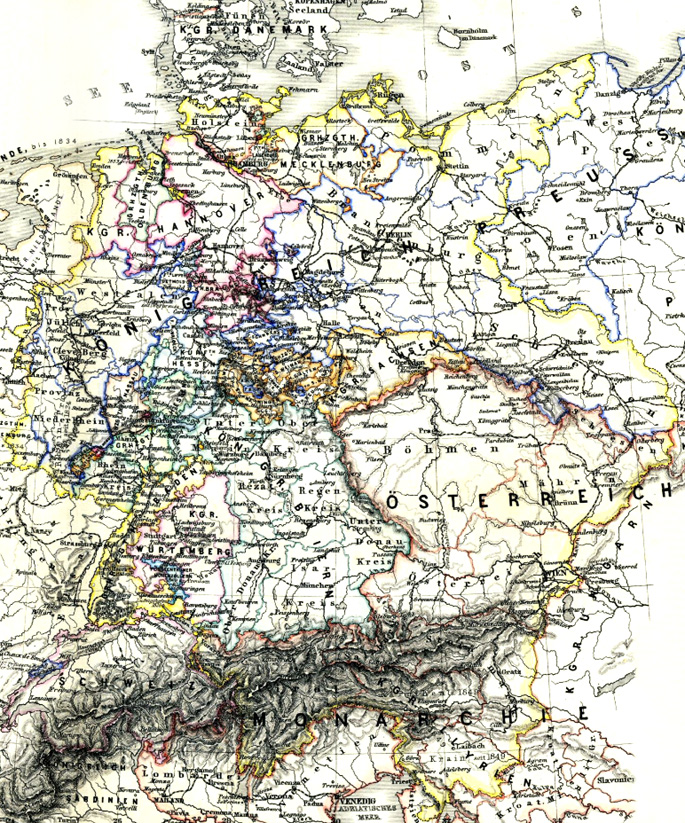
Source: Hand-Atlas für die Geschichte des Mittelalters und die neueren Zeit by Spruner and Menke
This map shows the German Confederation about 1847, within a yellow border.

Area: 243.280 square miles (1815)
Inhabitants: 29.200.000 (1815)
Density of Population: 120 inh./sq.mi. (1815)
Seat of the Federal Assambly: Frankfurt
official Language: German
Currency: The membering states had their own currencies.
Source:
Wikipedia (D)

6th of August in 1806 · Emperor Franz II. lays down the crown of the Holy Roman Empire of German Nation, the empire ends, remaining or subsequent structures are the Rhine Confederation, Prussia and Austria
1813–1815 · war of liberation against Napoleon (Napoleon's defeat at 16th ot 18th of October in 1813 near Leipzig)
1815 · Congress of Vienna, reconstruction of Europe after the era of Napoleon, the ownership and the administrative partitions in the former German Empire become restored, but not the sovereignty of the ecclesiastical countries, their possessions become transferred to old or new principalities, the 39 remaining German states become organized in a loose association, the German Confederation
1833/1834 · founding of the German Customs Union (de facto Germany without Austria) under the leadership of Prussia
1848 · civil revolution, election of the Frankfurt National Assembly
1849 · suppression of the May Revolt, restoration of the pre-revolutionary situation, many Germans leave Germany and emigrate mostly to the U.S.
1864 · German-Danish War, Denmark cedes Schleswig
1866 · Prussian-Austrian War, or German War or Fratricidal War, defeat of Austria and its allies against Prussia and its allies, Prussia acquires Schleswig-Holstein, Hanover, Hesse-Kassel and Nassau, smashing of the German Confederation and Prussia forces the establishment of the North German Confederation
Source: Wikipedia (D),
Atlas zur Geschichte,
Discovery '97,
Volker Preuß

Germany is the land of the Germans. The Germans themselves are not a growed nation in the usual sense, but originally an alliance of Germanic tribes. The Gemans call themselves "Deutsche". The word "Deutsche" comes from the ancient word "teudisk", what translated means "belonging to the tribe." It was used by the tribes which have spoken the "Theodisk" language, which goes back to the tribe of the Teutons. In 843 the Teutons were first called as "Teutisci". Over the yearhundreds "teudisk" became to "tiutsch" and later "deutsch". Neighboring nations or tribes, who were not "teudisk" took over the word for the Germans. In this way the Italians say: "Tedeschi", the Germanic Scandinavians: "Tysk" the Dutchman: "Duitse". Others simply called the "teudisk" as Germans, even if they were Germanic themselves, so the English: "Germans", but other nations acted in the same way, e.g. the Greeks: "Germanoi", or the Romanians: "Germani". Other neighbors took over the name of the tribe, with whom they had to do on their border, over all the tribes of the land, so the Frenchman: "Allemand," which goes back to the tribe of the Alemanni. This is internationally widespread. The Finns, call the Germans "Saksa," which goes back to the tribe of the Saxons. The Russians call Germany "Germania", but the inhabitants and their language they call "Nemjetski", which can be translated with "the dumb" because the Germans in Russia was once forbidden to speak their own language. Even this "Nemjetski" became widespread, so in all Slavic languages and as well as in the Hungarian language as "Nemat".
Source: Handbuch der geographischen Namen,
Volker Preuß




![]()





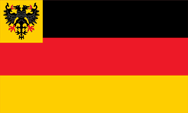


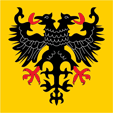
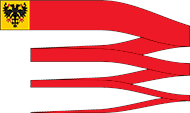






![]()